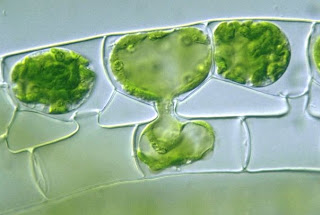
Spirogyra commonly called “pond silk” occurs in extensive muscles in living bright green free floating algae on the surface of stagnant ponds’ slowly running streams and fresh water streams. The thallus or plant body consists of long slender thread like un-branched filaments which are slimy to touch due to mucilage on there outer wall .
Each chloroplast is in the form of a constitutes a green spiral band with toothed edges hence the name spirogyra. The chloroplast has large pyrenoids in them. There is a large single nucleus one or two nucleoli and it is suspended in the middle of the cell by cytoplasmic strands

Lateral conjugation
Reproduction occurs asexually by fragmentation of the filaments and during unfavorable conditions by the formation of walled resting spores. Sexual reproduction is by conjugation. Turning of two morphologically identical cells but physiologically dissimilar gametes.



 Posted in:
Posted in: 






0 comments:
Post a Comment